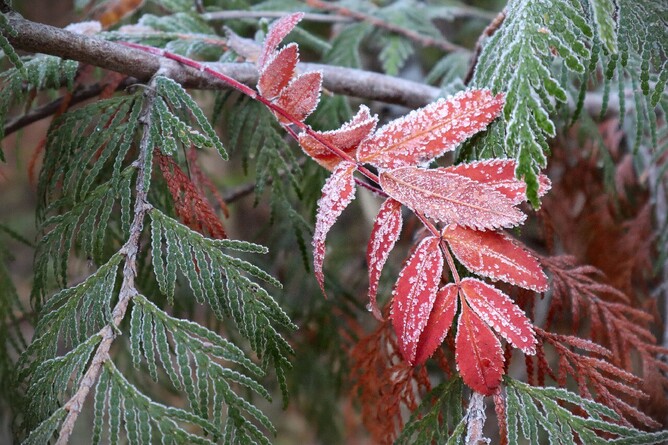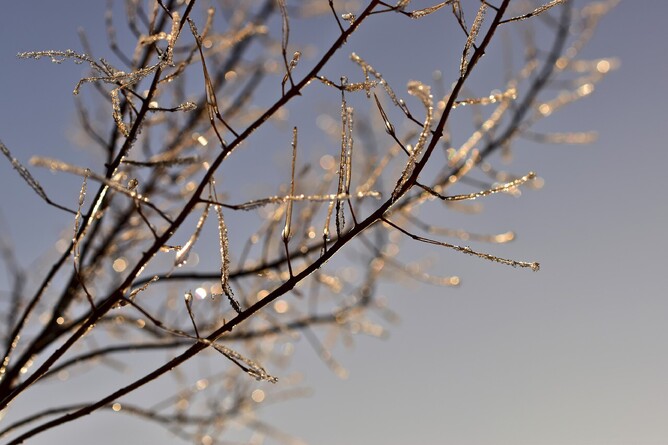The season's first frost can be a spectacular scene to wake up to after a cold night. But have you ever thought about how it can affect the plants and trees in your garden?
Frost occurs typically on clear nights where there is little or no wind. A thin layer of ice will appear on the ground or other surfaces when the temperature falls below freezing.
As we always say, planning is key to achieving a healthy green space. Learn about your space if you are the DIY type, or simply contact our team for advice.
How Can Frost Kill My Plants And Trees?
First things first. Why can some plants survive colder temperatures and some not? Nature is very complex but truly unique.
Some plants that are initially from cold areas have some frost hardiness. When humans decided to introduce some plants or trees to new environments, some were able to adapt and survive. While others struggled and died. But sometimes, nature needs our help to protect it from chill damage.
For example, trees with thick bark, furry leaves or a canopy will have higher protection from frost. However, the ice crystals layer on trees can destroy their tissues or lead to moisture loss.
Some tree leaves can turn black because of frost. Although you may think it’s dead, trees can recover once the temperature increases in spring.
Protection
Protecting your trees and plants from frost is an easy process. There are many methods you can use, including:
1. Cover
Using a lightweight fabric to cover your plants at night will trap the heat from the soil to keep them warm. During the day, make sure to remove it so the plant or tree can enjoy the warm sunlight. Then, apply it just before the sun sets over the top of the plant or tree.
2. Water
Another way to protect plants is to water them a day or two before the expected frost. When the soil is wet, it holds more heat than when dry. Water light as saturating may injure the plants or trees. We recommend watering in the evening before the temperature drops. Therefore, humidity levels will rise and will reduce damage.
3. Mulch
Mulch will create an insulating barrier between the soil and air during autumn and winter. Therefore, protecting plants and trees from the sudden drop in temperature. Although, it’s essential not to over-mulch before winter. Some sensitive plants need to access the bare soil to absorb the heat during the day. As a result, we recommend perhaps covering those tender plants.
Benefits Of Frost
Yes, you’ve read it right. Plants and trees can benefit from frost! Although, there’s always a BUT when it comes to nature. It depends on specie and region.
Deciduous fruit trees benefit from winter chilling like stonefruit, apples, and pears, as it assists in the formation of fruit buds. In addition, some winter vegetables improve with a good frost, like parsnips, carrots, brussels sprouts, broccoli, etc. This is because their sugar levels increase and, as a result, become more flavoursome.
It can also interrupt the spread of pests and diseases and improve the soil’s structure.
Can I Save My Trees Or Plants After Frost Damage?
Possibly. Prevention is key.
If a tree stem or limb show frost damage, don’t remove it. When the temperature increases, allow it time to recover. Trees can surprisingly heel if you give them time.
Keep an eye out for the weather forecast. You can plan better and get yourself organised when you can expect what the weather will be like.
Arranging your garden in a certain way can be beneficial in the long term for your trees and plants. For example, your garden and shrubs will benefit from the natural heat emitted from your house when planted next to your home. On the other hand, if you have an open garden, you will need to work more and keep them alive during the colder months.
Understanding the season cycles and how they can affect your trees are two things all property owners should know.
Be ready and prepared for the winter months.
If you need more advice, we would love to hear from you.

